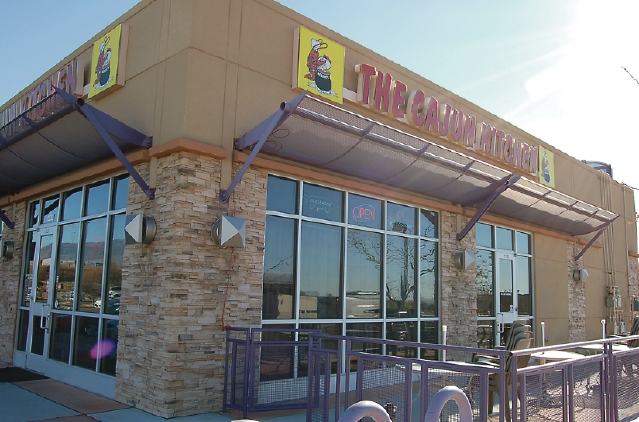Cajun Kitchen Review
Citified, Countrified And Bona Fide


Co-owner Lynn Hébert serves a plate of red beans and rice with sausage to a customer. Husband to Lynne and Cajun Kitchen manager, Flem Hébert, recently passed and can be seen in the mural behind them.
Tabatha Roybal








